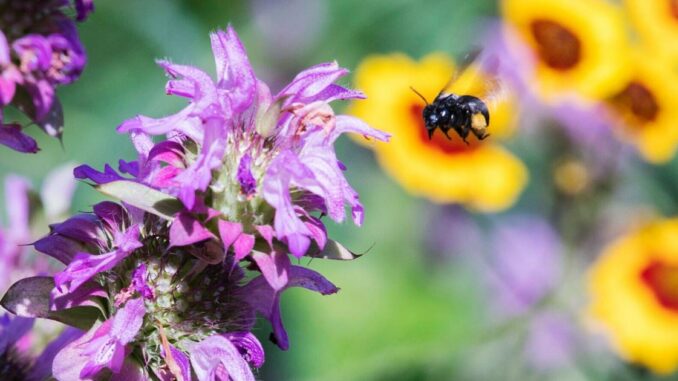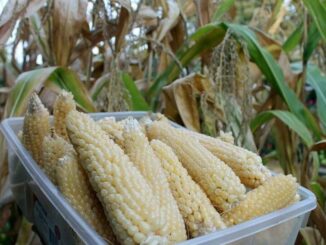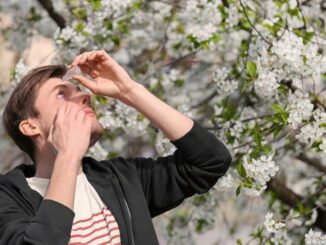
Many people suffer from pollen allergies, and while working outside are prone to sneezing, runny noses, watering eyes and sinus pressure headaches when pollen counts are high. That typically happens in spring because so many plants bloom then.
Problem pollens
What is pollen and why do plants produce it?
Pollen grains consist of tiny packets that carry the male reproductive cells of plants. They are part of the process plants use to produce fruit and seeds during sexual reproduction.
Wind-pollinated plants produce light pollen grains that are released into the air and drift in the wind. The goal is for the pollen to blow around and eventually land on the pistil of other flowers, pollinate them and produce seeds.
Wind-pollinated plants are characterized by drab, inconspicuous flowers that appear in clusters, tassels or catkins. Since they do not have to be showy to attract pollinators, you hardly notice the flowers of wind-pollinated plants.
Allergy problems are mostly caused by these tiny airborne pollen particles. They are easily inhaled and can cause allergic reactions in sensitive individuals. Many shade trees such as oak, maple, ash, pecan, juniper, pine and birch are wind-pollinated. Other wind-pollinated plants include grasses (blooming now), ragweed (a major cause of allergies in the fall) and various other weedy plants.
A bee collects pollen from lemon bee balm flowers as coreopsis flowers bloom in the background.
Keep the flower beds
Knowing that blooming plants are producing the pollen making you miserable might make you want to tear out all of your flower gardens. Don’t. The showy, colorful flowers we favor for our flower gardens are not wind pollinated and are not the primary culprits causing spring allergies.
Although we find these colorful flowers attractive, the flowers and the fragrances they may produce are not meant for us, but rather to attract pollinating insects or birds to visit flowers and carry pollen from flower to flower. The showy petals tell pollinators that nutritious nectar is available and waiting.
The pollen produced by these plants is never meant to become airborne. It is heavy and sticky and designed to cling to the body, legs and mouth of the pollinator. Most of the flowers in our gardens are insect-pollinated.
Because the pollen does not become airborne, it is rare for insect-pollinated plants to cause a reaction in allergic individuals unless they stick their noses in a flower. Fragrance is airborne, but few fragrances seem to bother people. Ligustrum, in bloom now, appears to be a notable exception.

As with most wind-pollinated plants, the flowers of ragweed are unremarkable when compared to the flowering plants we use in beds.
Bad raps
Sometimes the flowering, insect-pollinated plants get blamed for allergies caused by wind-pollinated plants. An example of this involves goldenrod (Solidago species) and ragweed (Ambrosia trifida), which bloom at the same time in fall.
Goldenrod produces showy, golden-yellow flowers that are insect-pollinated. Goldenrod pollen does not become airborne. Ragweed is wind-pollinated and causes allergies in many people. However, its flowers are inconspicuous, and you would never notice it blooming. So, goldenrod is often blamed for the hay fever that people suffer with in late September, October and early November. But ragweed, however, is the real culprit.
Allergy sufferers can use some simple tips to help minimize their exposure to pollen. Also, gardeners can avoid and eliminate troublesome pollen-producing plants to reduce airborne pollen in their gardens.
Tips for allergy-prone gardeners
Knowing how to limit exposure to problem pollens can make gardening, yard work and other outdoor activities more bearable. Keep these tips in mind to combat unnecessary exposure to pollen in your backyard.
Avoid gardening in the early morning hours, as pollen counts are highest before 10 a.m. Likewise, pollen counts tend to rise as the sun sets.
Wear a face mask to filter airborne allergens when working in the garden, mowing the lawn or raking.
When practical, choose trees, plants or shrubs that are not wind-pollinated when planning to beautify your yard. Remember, the prettier the flower, typically the safer the pollen.
Remember that pollen counts are highest on warm, sunny, breezy days and lowest on cool, cloudy, calm days or after a rainfall.
Shower as soon as you come in from a long period of gardening and wash your clothes.
Yards should be checked frequently to ensure that highly allergenic weeds such as ragweed, nettle, dock, plantain, pigweed and lambsquarters are not proliferating. In particular, keep bermuda grass at bay; highly allergenic pollen is produced by this plant that flourishes in garden beds and lawns.



Leave a Reply